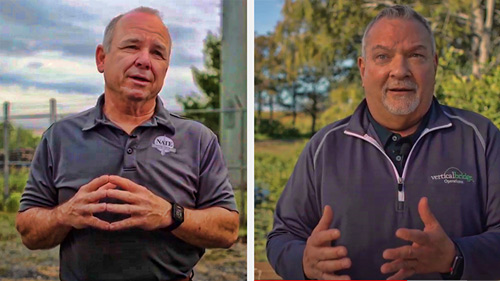
Jimmy Miller, President of Millerco and Vertical Bridge Director – Regulatory Compliance Richard Hickey participated in the U.S. Fish & Wildlife Service’s video to promote the benefits of new obstruction lighting that can save up to 4 million birds a year.
The video, with interviews with NATE Chairman Jimmy Miller, President of Millerco Inc. and Vertical Bridge Director – Regulatory Compliance Richard Hickey, is expected to proactively engage vertical realtors in implementing best practices at their towers to protect millions of birds every year.
Each year, nearly 7 million birds die due to night-time collisions with communication towers. Research has demonstrated that eliminating non-flashing lights on towers may reduce migratory bird collisions by as much as 70 percent while simultaneously reducing energy costs for tower owners. This means that exclusive use of flashing lights can save up to 4 million birds a year, adding up to hundreds or thousands of birds during the life of a single tower.
“We worked in partnership with several federal agencies to develop and implement actions that help avoid and minimize impacts to migratory birds from communication towers while simultaneously reducing tower construction and maintenance costs,” said Assistant Director for the Migratory Bird Program Jerome Ford in a blog post. “These changes reduce construction and operational energy costs for tower owners, making it a win-win for industry and birds.”
The video accents the fact that the new lighting systems can save $500 to $1,300 a year in electricity.
















